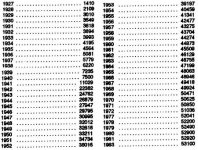The real Leigh
Diamond
- Joined
- Nov 23, 2005
- Location
- Maryland
Hi All,
I just got a #12 Jarno dead center, and it sticks out 3 1/2" from the flat camlock face. This appears to be much farther than the photos I've seen. It extends so far that the dog clamp arms are too short to mount a workpiece properly.
The spindle bore and taper are clean and unobstructed. I just ran a bronze wire brush through the spindle to be sure. The center appears to seat properly in the taper.
This is a high-quality US-made product, not a piece of chicom junk.
I don't understand why it's so long (9" OAL).
Any comments or suggestions would be most welcome.
Thanks.
- Leigh
I just got a #12 Jarno dead center, and it sticks out 3 1/2" from the flat camlock face. This appears to be much farther than the photos I've seen. It extends so far that the dog clamp arms are too short to mount a workpiece properly.
The spindle bore and taper are clean and unobstructed. I just ran a bronze wire brush through the spindle to be sure. The center appears to seat properly in the taper.
This is a high-quality US-made product, not a piece of chicom junk.
I don't understand why it's so long (9" OAL).
Any comments or suggestions would be most welcome.
Thanks.
- Leigh







